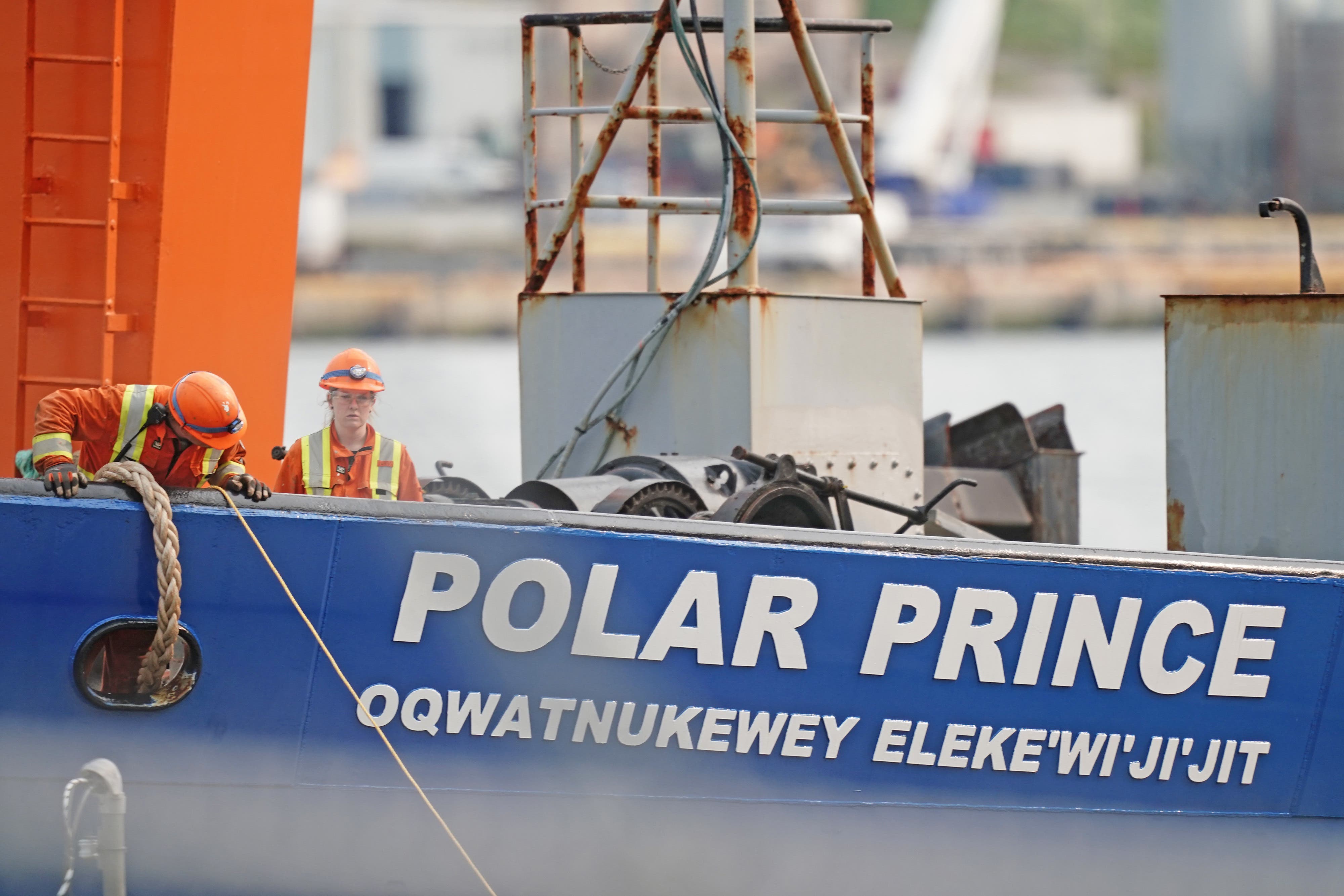Titan submersible: What happens next?
The submersible imploded with five people on board off the coast of Canada.

Almost a week after the Titan submersible left a Canadian port for a sightseeing trip to the ocean floor where the wreck of the Titanic lay, the focus is now on any possible recovery of the debris of the craft or the remains of its pilot and four passengers.
The US Coast Guard announced on Thursday night British billionaire Hamish Harding, UK-Pakistani businessman Shahzada Dawood, his 19-year-old son Suleman Dawood, the vessel’s American pilot Stockton Rush and French national Paul-Henri Nargeolet were killed instantly in what authorities described as a catastrophic implosion or sudden collapse inwards of the Titan.
As Titan’s main support ship, the Polar Prince, returned to the dock at St John’s in Newfoundland, Canada on Saturday, the PA news agency looks at what might happen next.
– Will the bodies be recovered?
Officials in the US have said they are “not sure” they can recover the bodies of the five people who died deep in the North Atlantic.
They say there is no timeframe for when they could call off any recovery efforts.
In a press conference in Boston on Thursday, Rear Admiral John Mauger from the US Coast Guard told reporters he could not say what the prospects were of recovering the bodies of those killed.
He said: “This is an incredibly unforgiving environment down there on the sea floor and the debris is consistent with a catastrophic implosion of the vessel.
“And so we’ll continue to work and continue to search the area down there, but I don’t have an answer for prospects at this time.”
The ocean liner Titanic lies in two main pieces 12,500 feet down on the sea floor after it hit an iceberg on its maiden voyage from Southampton in 1912.
– What will happen with the search?
Given its role so far, the US Coast Guard is likely to remain an important player in the search for the bodies.
Some of its vessels and technicians had begun to return to St John’s on Friday, indicating that the search was beginning to wind down.
Pelagic Research Services – whose remote operating vehicle (ROV) discovered the debris fields – told CNN it plans to remain onsite conducting ROV missions for another week.
The cost of the search will likely stretch into the millions of dollars for the US Coast Guard alone.
– What will happen to debris from the sub?
Search teams will want to clear up as much of the debris as possible, including bits of the carbon fibre that formed part of the structure, so authorities can build a better picture of what happened.
Undersea expert Paul Hankin said five major pieces of debris found had helped to identify the fate of the Titan.
The middle section was made from carbon fibre and investigators are likely to focus on whether a structural failure there caused the tragedy.
Investigators will be gathering every piece of the debris they can find, Ryan Ramsey, former submarine captain in Britain’s Royal Navy told the BBC.
He said: “There is no black box, so you are not going to be able to track the last movements of the vessel itself.
“But otherwise the process of investigation is not dissimilar to that of a plane crash.”
In particular investigators will be looking for the site of any rupture – which will be difficult because the vessel’s body is in small pieces and is being collected by remotely operated vehicles in the darkness of the North Atlantic.
– What will happen in any investigation?
On Friday, the Transportation Safety Board of Canada (TSB) said it was investigating safety on board the submersible, run by Mr Rush’s expedition company OceanGate.
Questions have been raised over whether OceanGate could be sued by the families of those who died.
This could be complicated by waivers signed by the passengers saying they understood the mission carried the risk of serious injury or even death.
However, it is not uncommon for judges to reject such documents if there is evidence of gross negligence or hazards that were not fully disclosed, legal experts have said.
The degree of any potential negligence and how that might impact the applicability of the waivers will depend on the causes of the disaster, which remain under investigation.